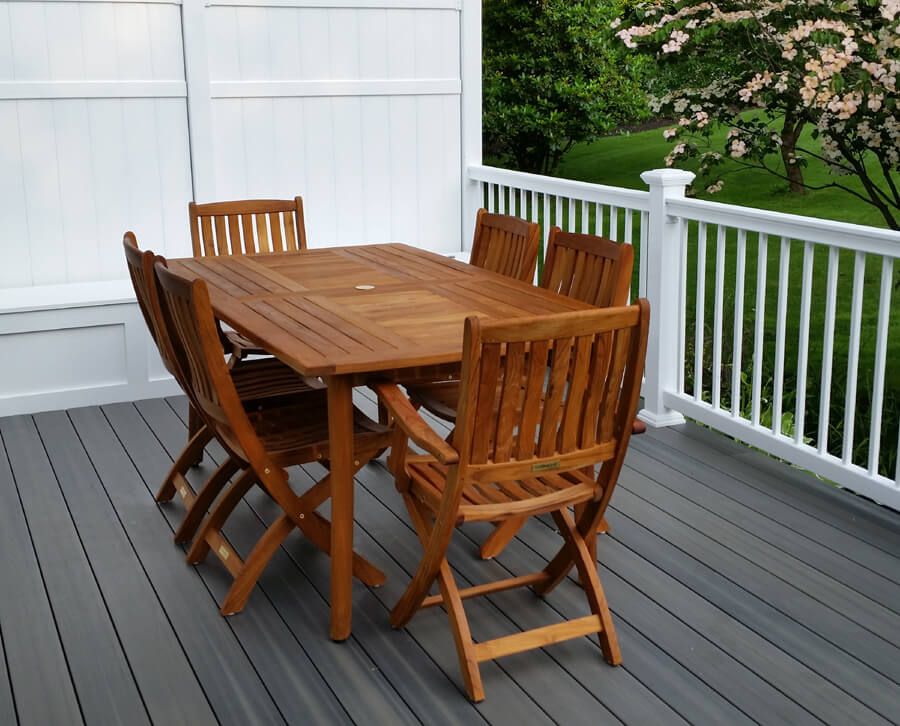Outdoor living spaces have become integral parts of modern homes, serving as extensions of indoor spaces for relaxation, entertainment, and socialization. In this realm, teak furniture stands out for its timeless elegance, durability, and natural beauty. As we look into the future of outdoor living, innovations in teak furniture design are poised to revolutionize the way we experience and interact with our outdoor environments.
The Timeless Appeal of Teak
Teak has long been prized for its exceptional qualities, making it a preferred choice for outdoor furniture. Its high natural oil content and dense grain provide inherent resistance to rot, decay, and insect damage, ensuring longevity even in harsh outdoor conditions. Moreover, teak’s rich, golden hue weathers gracefully over time, acquiring a distinguished silver patina that adds character to outdoor spaces.
However, traditional teak furniture designs have largely remained unchanged for decades, prompting a surge in demand for innovative approaches that blend functionality with aesthetics.
Sustainability and Ethical Sourcing
In the wake of growing environmental concerns, sustainability has become a paramount consideration in furniture design. Consumers are increasingly conscious of the ecological footprint of their purchases, driving the demand for responsibly sourced materials.
Teak, harvested from sustainably managed plantations, aligns with this eco-conscious ethos. Manufacturers are embracing sustainable forestry practices and certifications such as the Forest Stewardship Council (FSC) to ensure the long-term viability of teak resources.
Furthermore, ethical sourcing extends beyond environmental considerations to encompass fair labor practices and community welfare. Companies are investing in initiatives to support local communities and artisans involved in teak furniture production, fostering a sense of social responsibility.
Technological Advancements
Advancements in technology are reshaping the landscape of furniture design, offering new possibilities for creativity and functionality. In the realm of teak furniture, these innovations are driving remarkable transformations.
One notable advancement is the integration of smart technology into teak furniture pieces. Imagine outdoor dining tables equipped with built-in LED lighting and wireless charging capabilities, or lounge chairs with integrated speakers and Bluetooth connectivity. These innovations not only enhance convenience but also elevate the overall outdoor living experience.
Additionally, 3D printing technologies are revolutionizing the manufacturing process, enabling designers to create intricate and customizable teak furniture pieces with unprecedented precision. From ornate lattice patterns to ergonomic contours tailored to individual preferences, 3D printing opens up a realm of design possibilities previously unattainable.
Design Trends and Aesthetics
As outdoor living spaces evolve into extensions of indoor environments, design trends in teak furniture are mirroring those found indoors. Clean lines, minimalist aesthetics, and modular designs are gaining popularity, reflecting a contemporary sensibility.
Moreover, there is a growing emphasis on multifunctionality and space optimization. Teak furniture pieces that serve dual purposes, such as storage benches that double as seating or coffee tables with integrated planters, are increasingly sought after, especially in urban settings where outdoor space is limited.
Furthermore, there is a resurgence of interest in retro-inspired designs, with mid-century modern teak furniture experiencing a revival. Iconic pieces from the mid-20th century are being reimagined with a contemporary twist, blending vintage charm with modern functionality.
Environmental Adaptability
Climate change poses challenges to outdoor furniture durability, requiring designs that can withstand extreme weather conditions. In response, manufacturers are incorporating innovative materials and engineering solutions to enhance teak furniture’s environmental adaptability.
For instance, advancements in composite materials allow for the creation of teak-inspired furniture that offers the look and feel of natural wood while being more resistant to moisture, fading, and warping. These hybrid materials combine the aesthetic appeal of teak with the durability of modern synthetics, offering a compelling solution for outdoor settings prone to inclement weather.
Conclusion
The future of outdoor living holds exciting prospects for teak furniture design, driven by a convergence of sustainability, technology, aesthetics, and environmental adaptability. As consumers increasingly prioritize quality, longevity, and style in their outdoor furnishings, the demand for innovative teak furniture solutions will continue to grow.
By embracing sustainability, harnessing technological advancements, and exploring new design trends, the timeless allure of teak furniture will remain firmly rooted in outdoor living spaces, enriching our connection with nature and enhancing our outdoor experiences for generations to come.
Source:
indonesia furniture manufacturer
teak outdoor furniture indonesia
